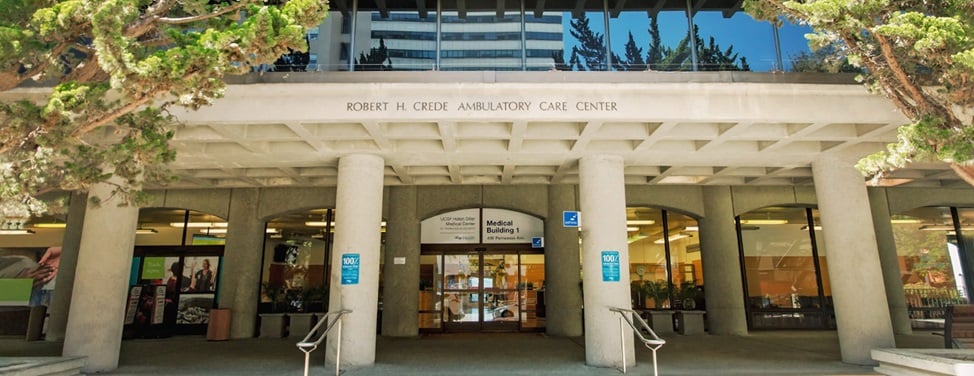
Autologous Transplant Guide: Pre-Transplant Evaluation
Your First Bone Marrow Transplant Consult Visit
During your first visit to UCSF Medical Center, you will be assigned to a clinic doctor who is a specialist in bone marrow transplantation. The doctor will review your medical record and history, do a physical exam and discuss bone marrow transplantation with you. If additional tests are needed for evaluation, these may be scheduled over subsequent days at UCSF, or through your local doctor.
Occasionally, the clinic doctor may decide, based on test results or other factors, that stem cell transplantation is not an appropriate method of therapy. However, if you are found to be a good candidate for bone marrow transplantation at this time, your doctor will recommend a treatment plan.
You will meet your transplant coordinator nurse who will arrange for all further tests and appointments up until the time you are admitted to the hospital for transplantation. The case manager will work with the financial counselors and your insurance company to seek financial clearance for your transplant procedures. The social worker will review with you any special needs.
Before your first consult visit is over, be sure that you clearly understand what your treatment plan involves and how it is to be scheduled. For example, you may have to have additional conventional dose chemotherapy (not high-dose) prior to admission or you may need additional tests. Whatever your personal treatment plan is, be sure you understand what is to be done and when it is to take place.
Fertility Issues
Most types of chemotherapy or radiation used for transplantation result in long-term infertility. Patients who are interested in having a larger family after transplantation should investigate the possibility of sperm or ovary banking. Your transplant coordinator can provide information, or see the UCSF Fertility Preservation Program.
Preadmission Tests
Before your admission to the hospital, you will have several days of laboratory and other diagnostic tests to determine if you have normal function of the heart, lungs, kidney and liver and that you do not have an undiagnosed infection. Most of these tests will be done as an outpatient before you are admitted to the hospital but others may need to be completed after you are admitted for treatment. These tests may include:
- Blood tests
- Urine collection
- Bone marrow aspiration and biopsy
- Chest X-ray
- Pulmonary function tests (PFTs)
- Computed tomography (CT scan)
- Electrocardiogram (EKG)
- Cardiac scan
- Sinus X-rays
Be sure to keep all appointments for these tests and to follow any preparation instructions you are given.
Catheter Placement
A flexible tube called a catheter with several lumens will be inserted into a large vein in your chest under the collarbone. This can be either an outpatient or inpatient procedure. The insertion may cause some initial discomfort and then soreness for several days.
The catheter enables the health care team to administer chemotherapy, other drugs, blood products and even the stem cell transplant to you painlessly. Also, the catheter will be used to withdraw samples for blood tests required during the course of treatment, thereby minimizing the need to insert needles into your arms or hands. Most patients have their catheters removed before they are discharged. In general, the catheter is present throughout the hospital stay, which is about three to four weeks.
Continue Reading
- Next: In the Hospital
Return to the Autologous Transplant Guide Index:
UCSF Health medical specialists have reviewed this information. It is for educational purposes only and is not intended to replace the advice of your doctor or other health care provider. We encourage you to discuss any questions or concerns you may have with your provider.






